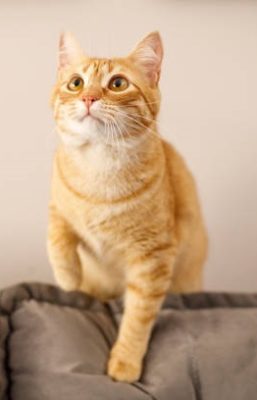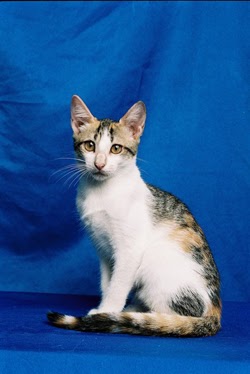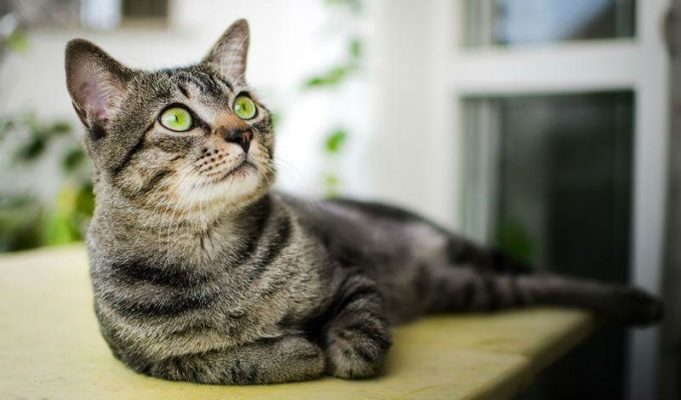Brazilian Shorthair

The main peculiarity of the Brazilian Shorthair’s behavior is that she can be overly obsessive. She loves attention and affection from her owner and is ready to give it in full. She is not shy and is very curious. It is also a true friend for the child. The Brazilian Shorthair is patient with any long active games and antics of the child.
Table of Contents
Breed Information
| Origin | Brazil |
| Size | Males 27-30 cm Females 20-27 cm |
| Weight | Males 4-7 kg Females 3-5 kg |
| Fur Type | Short-haired |
| Color | Any color variations are possible |
| Lifestyle | Outdoors, indoors |
| Lifespan | 14-20 years |
| FIFe Classification | – |
| WCF Classification | Group 3: “Short-haired” Breed designation – BRA |
| TICA Classification | – |
| Group | Short-haired cats |
| Price | $1000-1200 |
Breed Photos
Origin History
Breed researchers insist that the Brazilian Shorthair cat is an ancient breed and has been around for more than 500 years. Its ancestors are considered common street cats brought to the South American continent by Portuguese and English sailors in the 16th century. At that time, representatives of the breed could occasionally be found wandering the streets of Brazil. The locals used the Brazilian Shorthair as an indispensable rodent hunter.
Population and work on the breed began only in 1980 when the Brazilian engineer Paul Samuel Ruchi discovered a special genotype in cats. A little later, he also became the founder of the Brazilian Cat Federation. By 1985, the development of the first breed standard and a careful selection began. The ideal representative of the Brazilian Shorthair cat was presented to the world in 1994. The World Cat Federation (WCF) was officially recognized as an independent breed Brazilian Shorthair cat received in 1999.
Appearance
The Brazilian Shorthair is a stout and refined medium-sized cat. The physique is balanced; the musculature is moderately developed. The head is wedge-shaped; its length slightly exceeds the width. The muzzle is small, with a pronounced chin. The eyes are large, almond-shaped, set wide, and have a little slanting look. The color of the eyes usually is in harmony with the color of the coat. Silver cats have green or yellow eyes, white cats have blue eyes, while other colors preferably have copper ones. The ears are triangular, medium-sized, set quite wide.
The limbs are in proportion to the body, small and with rounded feet. The tail is broad at the base and gradually narrows towards the end. The Brazilian Shorthair has dense and thick hair without a coarse undercoat. The touch is silky. The standard allows any variation of color: black, red, white, tortoiseshell, blue.
Character
The main peculiarity of the Brazilian Shorthair’s behavior is that she can be overly obsessive. She loves attention and affection from her owner and is ready to give it in full. She is not shy and is very curious. It is also a true friend for the child. The Brazilian Shorthair is patient with any long active games and antics of the child.
The Brazilian Shorthair finds common ground with other animals without any problems. Surprisingly, this applies even to dogs. It is very important to give a Brazilian Shorthair cat care. Without proper attention, she may become aggressive, irritable and close herself off at all. It is not suitable for a person who is always away at work. The breed is very sociable; they are not shy of strangers and will be the first to show interest in them.
Care
The Brazilian Shorthair is excellent for keeping both in a private home and in an apartment. What is characteristic of the Brazilian Shorthair is that it loses very little hair during the molting period. It is enough to comb out the pet once every few weeks. To do this, get a special silicone brush with soft teeth. With this, you can gently rid your pet of dead hair.
Don’t forget the standard hygienic recommendations: clean eyes and ears twice a week. Claws of a Brazilian Shorthair cat grow quite quickly; it is advisable to trim them every two weeks.
Education
Owners of the Brazilian Shorthair cat note its compliant nature and calm disposition. It combines independence and autonomy with gentleness and quick wit. Easily assimilate and comply with all requests and commands of the owner. Brazilian Shorthair literally “grew up” and formed on the streets of Brazil. Therefore, for the breed, it is very important to walk in the fresh air. Often the Brazilian Shorthair is successfully accustomed to walking on a special cat harness and leash.
Common Diseases
The strong immunity and health of the Brazilian Shorthair are exactly what nature intended. No severe hereditary diseases have been found during many years of research on the breed. However, that does not mean you can rule out a visit to the vet. Be sure to have your pet’s annual health check-up and seasonal vaccinations. There is a risk of some abnormalities occurring:
- obesity;
- problems with the digestive system.
Nutrition
The Brazilian Shorthair cat is undemanding in its choice of food. She will never refuse an extra tidbit. You should carefully monitor the portions of the cat because the breed is prone to gain weight. The Brazilian Shorthair’s diet should include plenty of protein and all essential vitamins.
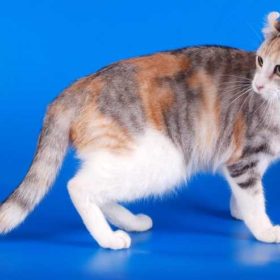 American Curl Shorthair
American Curl Shorthair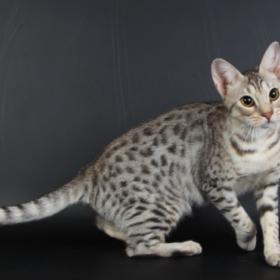 Australian Mist
Australian Mist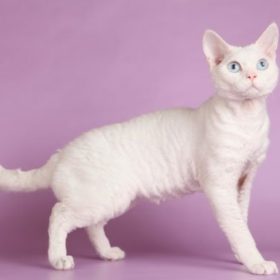 German Rex
German Rex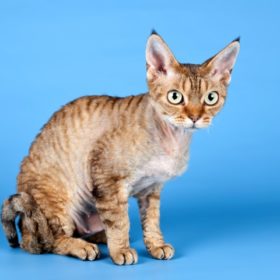 Devon Rex
Devon Rex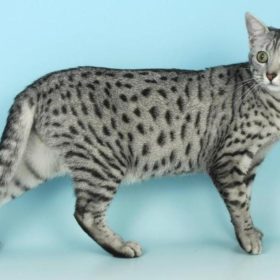 Egyptian Mau
Egyptian Mau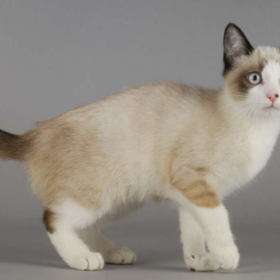 Snowshoe
Snowshoe